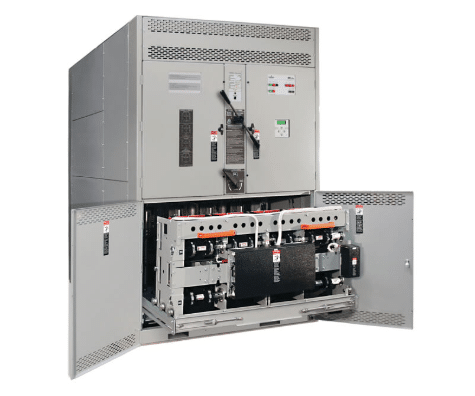What is an Automatic Transfer Switch?
For any business to function, electrical power is absolutely critical. Depending on your building’s electrical capacity, and day-to-day operations, you might have questions about the function of an Automatic Transfer Switch.
An automatic transfer switch (ATS) is an electrical device that connects the load to a backup generator in case of a power outage or failure. When this device senses outage or failure from the primary electrical power source, it activates the backup power generator and switches the load from the primary source to the backup generator. If your ATS does not operate properly in an outage, the load WILL go down as this is the single point on which the transfer from utility to emergency power takes place.
The device also serves as an electrical relay, which is why it acts as a connection between the power supplies and equipment. When the primary source stops providing electrical power, the ATS activates the generator. After the generator starts working, it connects equipment to the backup generator to ensure smooth emergency power supply. But when the primary source starts supplying power again, the ATS switches the load to the primary supply and switches off the generator.

However, at specific sites, the buildings or equipment that require power are located far apart. This prevents parallel operations when the power is lost. These sites employ multiple generators to continue their operations. Since these buildings/equipment are too far apart from each other, they need to be powered by separate generators. As a result, they also require multiple automatic transfer switches, which work in the same way as the single generator scenario. When the site stops receiving utility power, the automatic transfer switches activate the generators, which they are connected to and switch their respective loads to the corresponding generators for backup power.
Such a configuration can also work selectively when desired. For instance, one building loses connection to utility power while the other buildings continue to receive electrical power from the same. In this case, it is only the ATS of the building that lost power will be activated. The building will receive electric power from its backup generator while the remaining buildings will continue to operate with utility power. Also, it is important to note that one generator can be tied into multiple transfer switches and each needs to operate properly.
Switchgear
The crucial role of switchgear is to prevent overloads and short circuits. They also allow circuits to be isolated from power supplies and energized by more than one source. Switchgear was initially used in power stations. They comprised knife switches installed on asbestos or marble panels. As the voltage and current levels started rising, the knife switch design turned into a safety hazard. These were soon replaced by circuit breakers, which are a much safer alternative.
Circuit breaker panels are utilized as switchgear for emergency generator use in residential settings. The configuration is quite simple in this case. When utility power is lost, the ATS provides power to the circuit breaker from the backup generator.
Switchgear is made from two kinds of components:
Power conducting equipment. This includes lightning arrestors, fuses, circuit breakers, and switches. Their role is to conduct electrical power or interrupt its flow.
Control systems. These include protective relays, potential transformers, current transformers, control panels, and related circuitry. Their role is to protect, control and monitor power conducting equipment. Switchgear also requires regular Thermography Testing which Odyssey Power can perform, providing you with a full report of any hot spots which require repairs or breakers which may need replacing.
Odyssey Power can help save you downtime, and loss of revenue. We provide remote monitoring and full-service maintenance of uninterruptible power supply (UPS) systems and other building management systems. Contact us today for a competitive quote.
